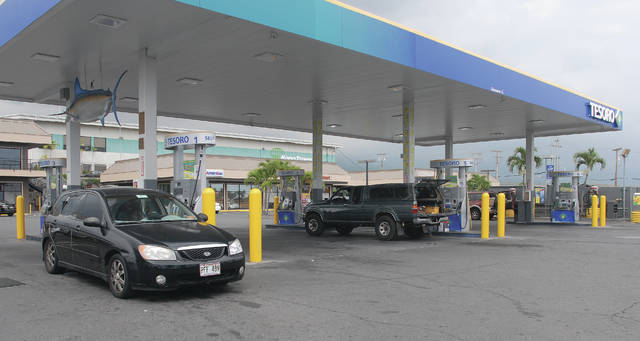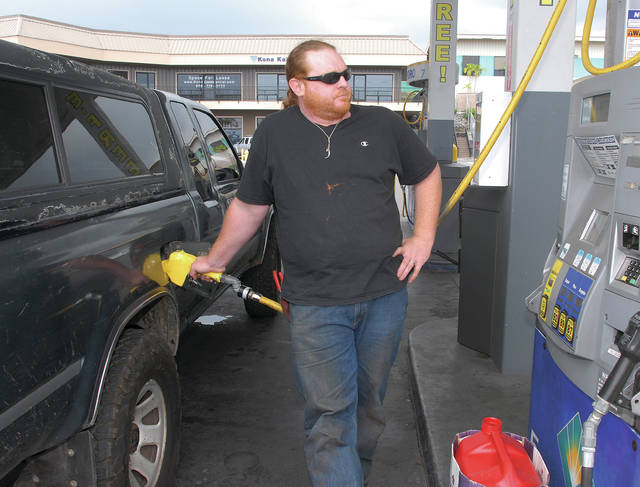HILO — Almost every one of the more than dozen residents addressing the County Council at a public hearing Wednesday on a gas tax increase was opposed to the idea. ADVERTISING HILO — Almost every one of the more than
HILO — Almost every one of the more than dozen residents addressing the County Council at a public hearing Wednesday on a gas tax increase was opposed to the idea.
Some offered suggestions: install toll booths, raise the general excise tax, vehicle weight tax or property tax instead.
“The roads have holes in them and they need to be fixed,” said Floyd Eaglin, testifying from Hilo. “We have choices. … Instead of bellyaching, we need to sit down and find a solution.”
Testifiers were skeptical the extra money would be used for its stated purpose and some worried about the effect on seniors.
“Adding the tax to these people is taking part of their quality of life away,” said April Lee, who lives in Hawi.
Some spoke on the disproportionate effect the tax will have on low-income commuters.
“I guess you hate poor people,” said Toby Hazel, testifying from Pahoa. “Well, I hate being poor.”
Others spoke to the ramifications on other goods and services that require fuel.
“Higher fuel prices mean higher prices for everything that requires transportation — food, clothing, furniture, construction activities, emergency vehicles, everything,” said Cory Hardin, testifying from Hilo.
Under the plan, the gas tax would rise first from 8.8 cents a gallon to 19 cents, with increases of 2 cents in each of the next two years until it reaches 23 cents. That’s the amount Maui now charges and is the highest rate in the state. The Hawaii County gas tax currently is the lowest in the state, bringing in just over $8 million. It was last raised in 1988.
Mayor Harry Kim, also testifying at the hearing, said he understands it’s a tough choice. It’s up to the council, he said, to modify, accept or reject the plan.
“I’m not insensitive to the position we’re putting you in, in regards to raising taxes,” Kim said. “Unfortunately, there is no good time to raise taxes.”
Gas taxes can be used only for road maintenance and repair and mass transit. The fuel tax is allocated to each transportation district by the Department of Public Works based on the miles of county-owned roads in each district. The increase is projected to more than double the current annual revenue.
The official statement that the fuel tax isn’t high enough because of the many miles of roads that need to be fixed is a two-sided coin, noted one testifier. The long travel distances affect drivers, too.
“Hawaii County has more area than all the other islands combined,” said Albert Nakaji of Papaikou. “This means that people here must travel farther than people on the other islands.”
Among the West Hawaii road resurfacing projects proposed if the tax hike is approved are Lunapule Road, Hinalani to Ane Keohokalole Highway, Saddle Road, Kamamalu Street and Kapaau Road. Old Mamalahoa Highway and Napoopoo Road also need resurfacing.
On the north part of the island, Highway 270, Kukuihaele Road and the old Mamalahoa Highway in Ahualoa are slated for resurfacing with the new tax.
In East Hawaii, Wainuenue Avenue to Kaiulani Street is on top of the list, followed by Kamehameha Avenue. Puna’s Kipimana Street, Waawaa to Kapoho and Wakea Avenue (Kamoamoa to Kialua Street) in Ka‘u are also targeted for resurfacing, according to a list provided by the Hawaii County Department of Public Works.






